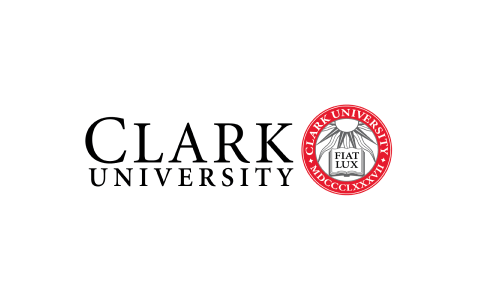Software Development Life Cycle Fundamentals - SDLC
Master Software Development Lifecycle with a free course! Learn Hibernate, ORM, and Java integration. Explore features, architecture, and hands-on demos for Java Hibernate. Unlock the advantages!

Ratings
Level
Learning hours
Learners
Skills you’ll Learn
About this course
Embark on a practical journey through Software Development Lifecycle Fundamentals with a dedicated focus on Hibernate and Object-Relational Mapping (ORM). The course introduces you to Hibernate, breaking down its features, architecture, and essential elements. Moving beyond theory, you'll explore the hands-on applications of ORM with Java Hibernate, reinforcing your understanding through practical demonstrations.
Dive into the core of Hibernate's architecture, gaining insights into its key components and uncovering its advantages within Java development. This course adopts a straightforward approach, ensuring that you grasp the fundamental concepts and feel confident applying them in real-world scenarios. By the end of the course, you'll have the practical skills needed to seamlessly integrate Hibernate into your software development lifecycle, setting you on a path towards effective and efficient Java development.
Course Outline
This module helps in understanding the step-by-step process of installing FlutterFlow and seamlessly integrating it with Firebase.
This module provides an overview of the fundamental concepts and importance of Hibernate, highlighting how Hibernate simplifies database operations and improves application development in real-world scenarios.
This module provides a fundamental overview of object-relational mapping (ORM), emphasizing its role in bridging the gap between object-oriented programming and relational databases.
This module highlights how Hibernate simplifies Java's integration with databases, streamlining database operations, and enhancing real-world application development through effective object-relational mapping (ORM).
This module focuses on how Hibernate simplifies database operations and improves real-world application development through efficient object-relational mapping (ORM) for seamless Java-database integration.
 UPGRADE
UPGRADE
Recommended university programs
Frequently Asked Questions
Will I receive a certificate upon completing this free course?
Is this course free?
What prerequisites are required to enrol in this Free SDLC course?
You do not need any prior knowledge to enrol in this SDLC course.
How long does it take to complete this Free Software Development Life Cycle Fundamentals course?
It is a 1.5 hour long course, but it is self-paced. Once you enrol, you can take your own time to complete the course.
Will I have lifetime access to the free course?
Yes, once you enrol in the course, you will have lifetime access to any of the Great Learning Academy’s free courses. You can log in and learn whenever you want to.
Other IT & Software tutorials for you
Software Development Life Cycle Fundamentals - SDLC
The Software Development Life Cycle (SDLC) is a systematic process that guides the planning, creation, testing, deployment, and maintenance of software applications. It provides a structured framework for developers to ensure that the final product meets the desired quality, functionality, and security standards. SDLC encompasses a series of phases, each with its own set of activities and deliverables, contributing to the overall success of the software development project.
The first phase of SDLC is the Planning phase, where the project's scope, objectives, timeline, and resources are defined. This phase involves gathering requirements from stakeholders, understanding their needs, and creating a project plan that outlines the entire development process. Clear communication and collaboration among team members are crucial during this stage to establish a solid foundation for the upcoming development activities.
Following the Planning phase is the Analysis phase. During this stage, the gathered requirements are thoroughly analyzed to identify potential challenges, risks, and opportunities. System analysts work closely with stakeholders to ensure a comprehensive understanding of the project's intricacies. This phase lays the groundwork for designing a system that aligns with the specified requirements.
The third phase, Design, involves creating a blueprint for the software based on the gathered requirements and analysis. System architecture, database design, user interface design, and other technical specifications are defined in this phase. Designing not only focuses on the technical aspects but also considers factors like scalability, security, and user experience.
Once the design is in place, the project moves into the Implementation phase. This is where the actual coding of the software takes place. Developers write the code according to the design specifications, and the system starts to take shape. Regular code reviews, testing, and collaboration among team members are essential to catch and rectify issues early in the development process.
Testing is a crucial phase within SDLC and comes after Implementation. The Testing phase involves thorough examination of the software to identify and fix any defects or bugs. Testing is conducted at various levels, including unit testing, integration testing, system testing, and user acceptance testing. Ensuring the software meets quality standards and performs as expected is integral to delivering a reliable product to end-users.
Once the software passes testing, it moves into the Deployment phase. In this stage, the software is released to users. Deployment involves activities such as data migration, training, and transitioning from development to live production. A well-planned deployment minimizes disruptions and ensures a smooth transition for end-users.
The final phase of SDLC is Maintenance. After deployment, the software requires ongoing support, updates, and enhancements to address issues, adapt to changing requirements, and improve functionality. Maintenance may involve bug fixes, performance optimization, and the introduction of new features based on user feedback.
SDLC is not a rigid, one-size-fits-all process. Various models, such as the Waterfall model, Agile model, and Spiral model, offer different approaches to software development. The choice of the SDLC model depends on factors like project size, complexity, and flexibility requirements.
In conclusion, the Software Development Life Cycle is a systematic and structured approach to developing high-quality software. By following the phases of planning, analysis, design, implementation, testing, deployment, and maintenance, development teams can deliver reliable and effective software solutions that meet the needs of stakeholders and end-users. SDLC provides a roadmap for developers, ensuring a methodical and organized progression from project initiation to successful software deployment and ongoing maintenance.


























.jpg)













